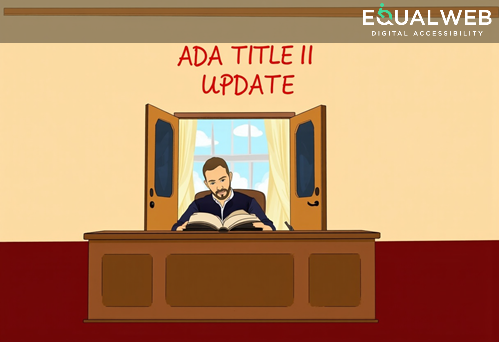Understanding ADA and WCAG Compliance
One of the biggest mistakes businesses make is misunderstanding
ADA website compliance requirements. While the
Americans with Disabilities Act (ADA) does not explicitly define digital accessibility standards, courts and regulatory bodies widely reference WCAG 2.1 AA and
WCAG 2.2 AA as the primary benchmarks. Websites that do not align with these guidelines may be subject to lawsuits and financial penalties.
To ensure compliance, businesses must stay updated on ADA requirements, conduct regular accessibility audits, and implement best practices for inclusive web design. Working with accessibility experts can further help in identifying and addressing potential compliance issues before they escalate into legal challenges.
The Dangers of Relying on Automated Accessibility Tools
Many businesses turn to automated accessibility checkers, believing they provide a comprehensive solution. However, these tools often fail to detect contextual and usability-related barriers that affect real users. Over-relying on automation creates a false sense of compliance, leaving many issues unresolved.
A truly accessible website requires a combination of
automated testing,
manual accessibility audits, and real-user feedback. Engaging individuals with disabilities to test your website’s usability ensures that accessibility barriers are identified and corrected effectively.
Common Website ADA Compliance Pitfalls
One of the most significant barriers to
digital accessibility is the lack of keyboard navigation support. Many users rely on keyboard input instead of a mouse, and if your website is not fully navigable using only the keyboard, it creates an exclusionary experience. Interactive elements such as links, buttons, and forms must be accessible via the Tab key, and clear focus indicators should be implemented to help users understand their position on the page.
Another prevalent issue is poor color contrast and visual design flaws. Text with low contrast against its background can make content difficult to read, especially for visually impaired users. Ensuring a contrast ratio of at least 4.5:1 for normal text and 3:1 for large text, as per
WCAG standards, can greatly enhance readability. Providing high-contrast mode options further improves user experience.
The Importance of Alternative Text and Media Accessibility
Images play a crucial role in website content, but without alt text, they become inaccessible to visually impaired users relying on screen readers. Each non-decorative image should have descriptive, meaningful alt text to convey the content’s purpose. Avoid generic descriptions like “image123.jpg” or overly vague labels such as “logo.”
Similarly, video content without captions or transcripts excludes users who are deaf or hard of hearing. Adding closed captions to videos and providing text transcripts for both audio and video files ensures full accessibility for all users.
Ensuring Accessible Forms and Error Messages
Forms are an integral part of online interactions, whether for contact inquiries, purchases, or sign-ups. However, inaccessible forms can create frustration for users who rely on assistive technology. To enhance accessibility, all form fields should have clear labels and instructions. Implementing ARIA (Accessible Rich Internet Applications) attributes helps in improving the usability of complex forms.
Error messages should also be clear, specific, and actionable, guiding users on how to correct input mistakes instead of providing generic or ambiguous alerts.
The Need for Ongoing Website Accessibility Maintenance
ADA compliance is not a one-time fix but an ongoing commitment. Websites evolve over time, and new content updates, design changes, or third-party integrations can introduce new accessibility barriers. Conducting regular accessibility audits, incorporating accessibility checks into the development process, and training staff on best practices help maintain long-term compliance.
Conclusion
Avoiding these common pitfalls ensures that your website remains ADA-compliant, inclusive, and user-friendly. Investing in accessibility not only helps prevent legal risks but also improves things like user experience and customer satisfaction. As digital accessibility becomes a greater focus in 2025, businesses that prioritize WCAG compliance will gain a competitive edge.
Need assistance with ADA compliance? EqualWeb offers expert accessibility solutions tailored to your business’s needs. Contact us today to ensure your website meets the latest ADA standards and creates an inclusive digital experience for all users.




